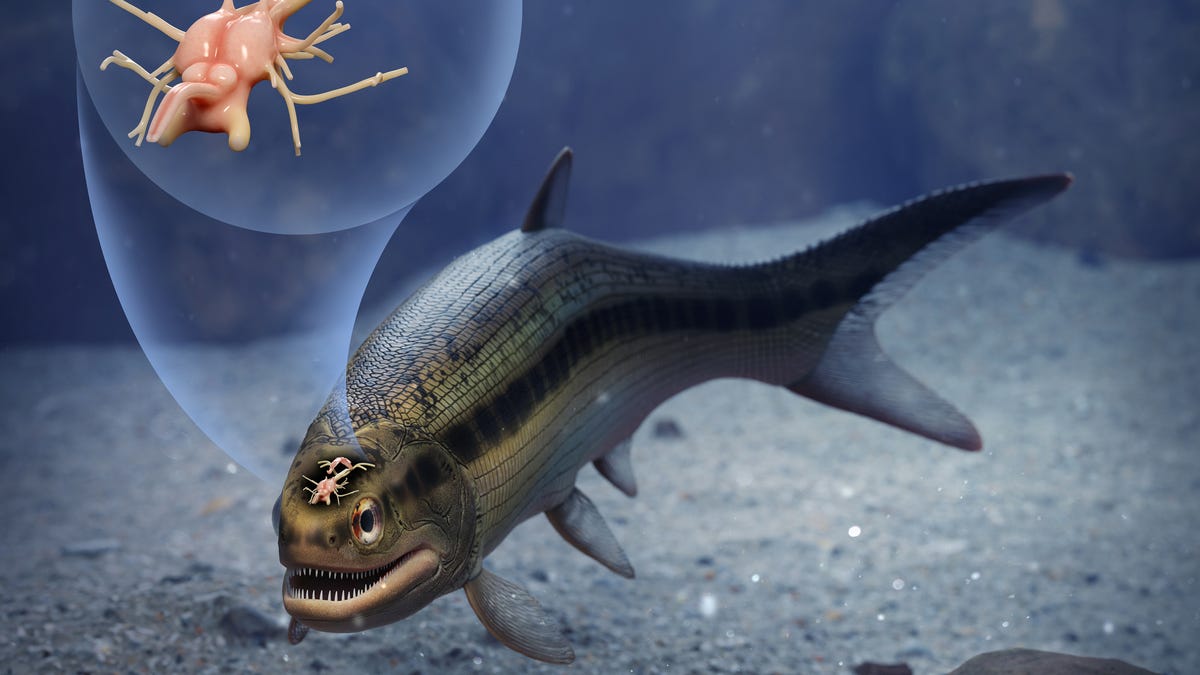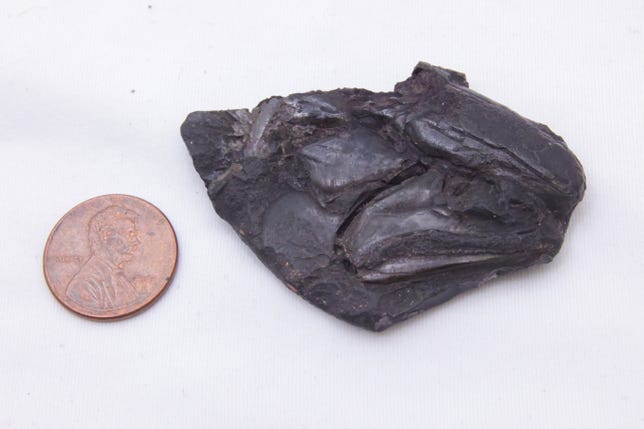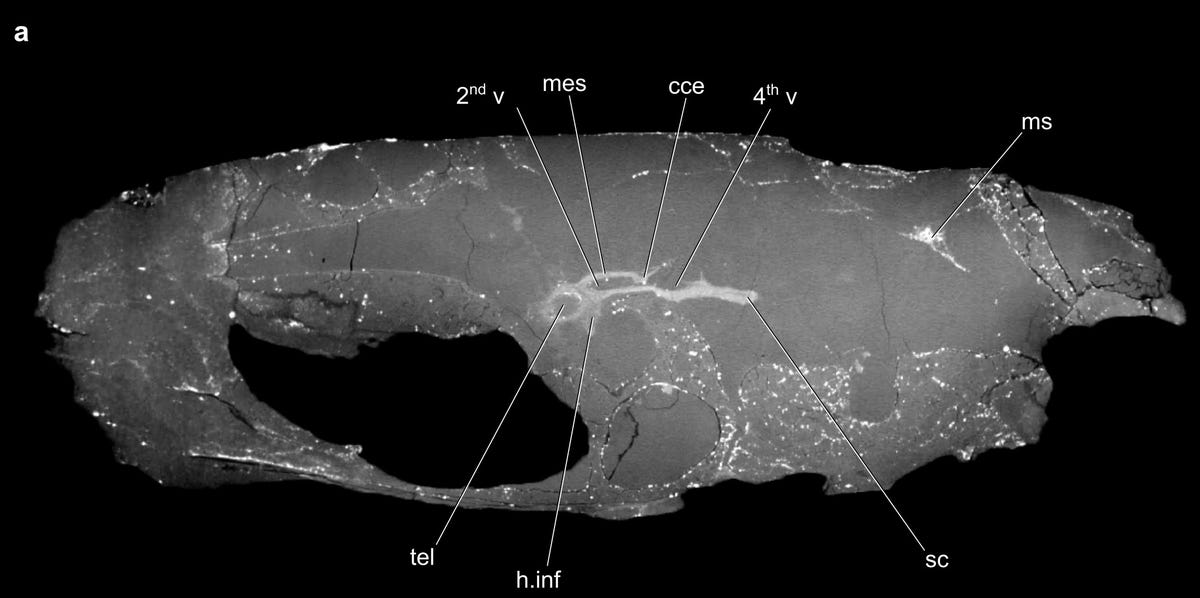
This artist’s rendering shows what Coccocephalus wildi might have looked like back when it lived over 300 million years ago.
Márcio L. Castro
A very long time ago, a fish died, was buried in sediments and eventually became fossilized. Today, 319 million years later, it’s the star of a study that reveals “the oldest example of a well-preserved vertebrate brain.”
University of Michigan doctoral student Rodrigo Figueroa led the study, published in the journal Nature on Wednesday. The small fish is Coccocephalus wildi, a type of ray-finned fish. Living examples of ray-finned fish include swordfish and trout. It’s a diverse group made up of about 30,000 species.

 Enlarge Image
Enlarge Image
The fossilized skull of Coccocephalus wildi doesn’t look like much from the outside.
Jeremy Marble/University of Michigan News
“This unexpected find of a three-dimensionally preserved vertebrate brain gives us a startling insight into the neural anatomy of ray-finned fish,” said paleontologist Sam Giles in a University of Birmingham statement. “It tells us a more complicated pattern of brain evolution than suggested by living species alone, allowing us to better define how and when present day bony fishes evolved.” Giles is a co-author of the study.
The researchers used a noninvasive CT scan — the same technology used for medical imaging of humans — to look inside the skull without damaging the fossil. They found a brain and cranial nerves that were about an inch (2.5 centimeters) long. The university said a dense mineral replaced the brain and nerves, preserving it “in exquisite detail.”

 Enlarge Image
Enlarge Image
One of the CT scan images of the Coccocephalus wildi skull from the paper. The lines point out parts of the brain inside.
Figueroa et al./Nature
We’re all familiar with fossilized bones, but preservation of soft tissues like brains is much rarer. The researchers were able to compare the structure of the ancient brain with modern-day animals. All current ray-finned fish have brains that fold outward as they develop in the embryo. Coccocephalus’ brain, however, folds inward. This knowledge helps scientists better understand the timeline of brain evolution in ray-finned fish.
Giles said Coccocephalus wildi’s brain resembles those found in paddlefish and sturgeon, which are considered “primitive” fish, since they diverged from other ray-finned fish over 300 million years ago.
The fossil was originally found in a coal mine in England over a century ago. “With the widespread availability of modern imaging techniques, I would not be surprised if we find that fossil brains and other soft parts are much more common than we previously thought,” said Figueroa. “From now on, our research group and others will look at fossil fish heads with a new and different perspective.”
